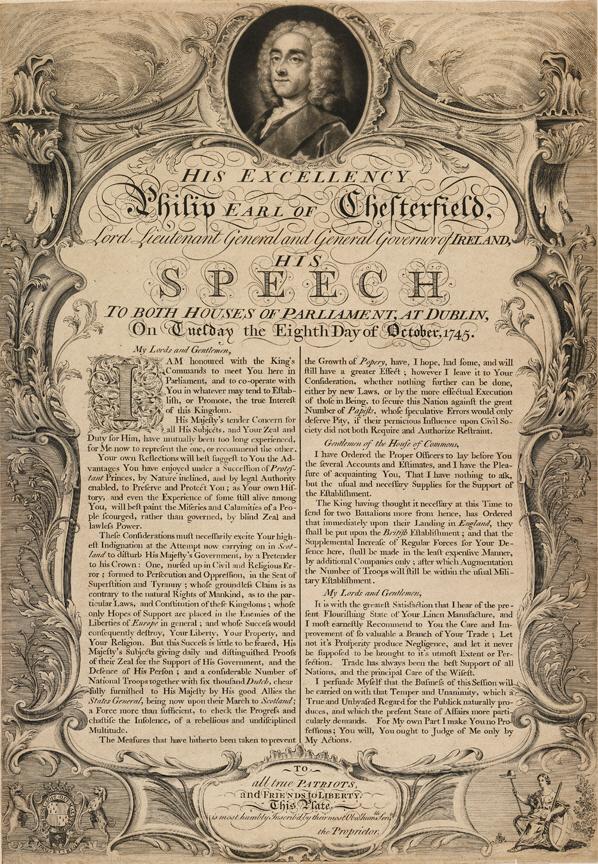A Marble Bust of William Maple ( 1679 - 1762).
by Patrick Cunningham (d.1774)
First Registrar of the Dublin Society (1731 - 62),
Honarary Secretary 1751 - 62.
Chemistry demonstrator at Trinity College Dublin and Keeper of the Irish Parliament House.
Photographs taken by the author 4 October 2016.
with grateful thanks to Gerard Whelan and the RDS.
Cunningham was taken on as an apprentice by John van Nost in May 1750.
John van Nost III is first mentioned in the Society's papers in 1749 when he as living in Jervis Street where he exhibited models in plaster.
____________________________________
From Dictionary of Irish Artists. pub. 1913.
Patrick Cunninghan was the son
of a wine-cooper in Dublin who having drawn a prize in a lottery started as a
wine merchant, but did not succeed. Left unprovided for, and showing a talent
for drawing, Patrick Cunningham was placed by the Dublin Society in Robert
West's drawing school in George's Lane, where he was a prize-winner in 1748.
The Society apprenticed him to Van Nost, the sculptor, and he was awarded in
1754 a premium of five pounds. In 1756, when in the last year of his
apprenticeship, he applied to the Society for assistance, setting forth that he
was "bare of clothes and linen," and he was given five pounds to
replenish his wardrobe. In 1758 he did figures of a "Roman Slave," a
"Venus," and a "Dolphin" for the Dublin Society, and under
its patronage he started for himself in William Street. In an advertisement he
says that he has "opened a yard and shop in William Street, where he undertakes
all manner of statuary work in clay, marble, brass, lead or plaster of Paris.
As he is the first native that has been bred to that business he humbly hopes
for the favour of the Public" ("Faulkner's Journal," August,
1758).
In 1760
he produced an equestrian statue of "George II," for which the Dublin
Society granted him ten guineas. In 1764 the Society ordered that a certificate
be given to him that he had been bred up to the art of statuary under the care
of the Society, that he had been adjudged several premiums, and that they were
well acquainted with, and had a good opinion of, his skill and execution.
In
1765 he designed a monument to Swift, which it was proposed to erect in College
Green, and exhibited it at the Society of Artists in George's Lane, as well as
a marble bust of "Dean Delany," and a statue of The Farnesian
Hercules." In the following year he contributed to the exhibition a marble
"Bust of Dean Swift." This bust he did for George Faulkner, the
publisher, who had it in his house in Parliament Street, where it stood on a
bracket in a bow window looking towards Essex Bridge. It remained in Faulkner's
possession until his death, and in 1776 was presented by his nephew, Thomas
Todd Faulkner, to the Dean and Chapter of St. Patrick's. It is now in the South
aisle of the Cathedral. To the same exhibition in 1776 Cunningham also sent two
busts in terra cotta and "Portraits modelled in coloured wax."
John
O'Keeffe, in his "Recollections," tells us that Cunningham
"invented the small basso-relievo portraits in wax of the natural colours.
They had oval frames and convex crystal glasses and were in great
fashion." Probably the success of these portraits induced him to confine
himself chiefly to them, for in 1766, being then in College Green, he issued an
advertisement informing the public that he "being determined to quit the
casting business will sell by auction at his shop in College Green on Monday
next, the 3rd March, 1766, his collection of figures, busts, vases, moulds,
etc., consisting of the 'Farnese Hercules,' 'Venus de Medicis,' and 'The
Sportsman,' all as large as life; antique busts of Roman Emperors and Poets,
with several modern busts, vases, academy and other figures"
("Faulkner's Journal," 1st March, 1766). He then moved to Capel Street,
and sent portraits in coloured wax to the exhibitions of the Society of Artists
in William Street in 1767 and 1768. He also contributed to the exhibitions in
1769 and 1770 when he was living in Fleet Street. In 1772 he married a Miss
Austin, of Abbey Street, and leaving Dublin, he settled in London. The year
after his arrival he sent nine portraits and figures in wax and a bust in clay
to the exhibition of the Society of Artists. This was the only occasion that he
exhibited his work in London, for he died in December, 1774, at Paddington.
Cunningham
was reputed the best wax-modeller of his day, but his works are now quite
unknown. In noticing his death the "Hibernian Journal" (14-16th
December, 1774) says: "He was a man of great fancy and imagination in
architecture, statuary and waxwork, in the latter of which he excelled any in
Europe, as may be seen by many of his performances." Besides the works
already mentioned Cunningham did a bust of "Dr. Lawson" for Trinity
College, for which he was paid £34 2s. 6d. in 1759. This is now in the Library.
He also executed a bust of "William Maple" for the Dublin Society and
a metal bust of "Frederick, King of Prussia." This bust was placed in
a niche on a house in Prussia Street in March, 1760, when "Cabragh
Lane" was changed to "Prussia Street." Beneath it was a black
marble slab with "Prussia Street" in gilt letters.
John
Cunningham, poet and dramatist, born in 1729, was the sculptor's youngest
brother.
See also a brief mention of Cunningham and van Nost in John O'Keeffe Recollections. 1826.























































